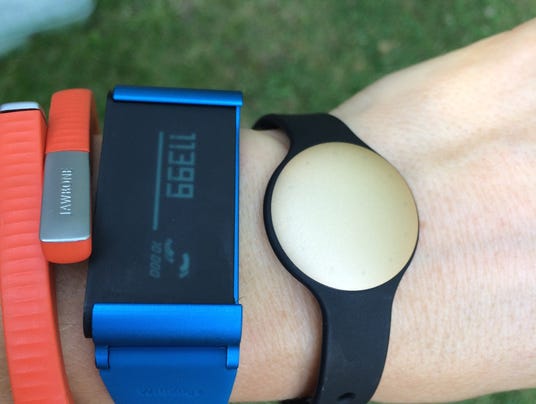There's a lot to love about the latest round of lifestyle tracking
bands.
The Jawbone UP24 is super simple and massively motivational. The newWithings
Pulse O2 gives other bands serious screen-envy. And Shine, by Misfit Wearables,
is a whole lot more than a pretty face. If you could put all three of these gadgets together with the Moves andMap My Run Apps, I
would love it so much I would want to marry it.
I'm only half joking.
As standalones, each new fitness tracker has a
few points to brag about, as well as a few weaknesses. Together, they've
totally stepped up their game toward getting you more healthy. They are
(finally!) so much more than glorified pedometers. If you've been eyeing these
little lifestyle trackers, it could very well be time to buy. So now, let's
figure out which one might be the right fit for you.
JAWBONE
UP24
The Jawbone UP24 is the right band for the
mainstream masses. It's the easiest of these three to just slap on and go. You
wear the thin little band around your wrist, and it records roughly how many
steps you take each day, how much and how well you sleep at night, and — if you
log your meals into the companion app on your smartphone — your calories and
nutrition information as well.
Gathering all that information is one thing, but
the real value here is in how well Jawbone's smartphone app presents the
important details back to you. The app layout is super simple, intuitive, and
gives all the information you need with one glance.
You open it up and see three main bars which
tell you how much you slept last night, how many steps you've taken today, and
potentially (if you log) how many calories you've eaten. There are also
motivational notes tailored for you, as well as your past data and overall trends.
You can connect with friends via social media
and see how your progress stacks up against theirs, which is a great boost for
accountability. You can also set reminders and goals within the app, so that
the band vibrates if you've been sitting still too long or need a reminder to
make an exercise class.
The biggest weakness with Jawbone's UP24 is that
there's no display on the actual wristband itself, which keeps you tethered to
your smartphone to check your progress throughout the day. There's a little
flower that lights up if you've set a reminder, and a little moon to denote
that you're in sleep mode, but that's it. If I'm wearing this thing around my
wrist all the time, I at least want to be able to see what time it is.
Who it's
great for:
Casual fitness fans, desk jockeys, and anyone getting started with a slightly
more structured health routine. You do not need to be tech-savvy to use it.
With 7-day battery life and the flexible app, the Jawbone UP24 lets you tweak
your own personal approach to fitness, and it's not as demanding as many of the
alternatives. You can pick one up for $149.99.
SHINE
The Shine disc-tracker is about the size of a
quarter and pretty enough to wear as a piece of jewelry. Like the Jawbone, the
tiny Shine sensor keeps track of movement, including steps, sleep and food, and
automatically syncs up with a smartphone app. But unlike the alternatives,
Shine is waterproof, has an internal battery that lasts up to a year (vs.
having to charge it up once a week) and can virtually disappear within your
daily wardrobe.
Simply snap the tiny gadget onto a lapel or
sleeve, or wear it as a piece of jewelry with one of the dozens of flashy
fashion accessories available. With the built-in LEDs that show the current
time, you can even wear it as an ultra-modern, eye-catching watch. When it's
time to tally your daily accomplishments, simply sync the sensor on your
smartphone screen and watch the Shine app record it all.
Shine's app also does an excellent job of
translating your goals into real actions. For instance, if you want to lose a
pound a week, the app crunches numbers with your height, weight, and age, and
tells you what actions will get you there — like walking for 2.5 hours per day
or running for one hour. As your day goes on, you earn points on your progress,
and LED lights on the tracker also light up as you closer to your goal.
Who it's
great for:
Fitness fashionistas, workaholics, early-adopters, the moderately tech-savvy,
and anyone who wants a low-key activity tracker without the world knowing
you're wearing it. The Shine sensor costs $119.95, with optional accessories
that range from $19.95 to $79.95. Continue reading…
For
more info about Corliss Group Latest Tech Review, visit our facebook page and follow us on twitter @CorlissTech.









